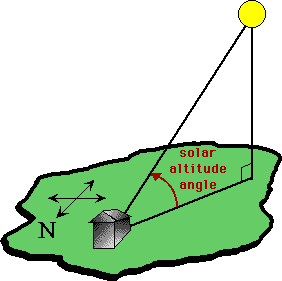|
|
||||
|
|
||||
|
To do: Print out pdf document for Lab B Exercise Materials needed: pencil, eraser, textbook, and calculatorPart I. Earth-Sun RelationshipsBased on the materials presented in the textbook and supplementary lecture notes, complete parts A and B on page B-1.
Part II. Daylight and DarknessPart B. How many hours of darkness would be experienced on Dec. 21st at? Hint: Figure out hours of darkness for Point Barrow, Alaska and South Pole. Compare your answers from Parts A and B for these two locations. Do you see a pattern forming? If so, you'll be able to quickly answer the other four locations. Also, the Equator should be easy to do.
Part III. Calculating Solar Altitude (Elevation Angle or a)
- if solar declination and latitude are in the same hemisphere, subtract (larger number minus smaller) *Also, if a comes out negative, then the sun is below the horizon (it's dark outside). Please record your answer as "BH" or "Below Horizon" - don't give a negative number for an answer. a = 90° - (45°N +/- 23.5°N). Since both the latitude and declination are in the northern hemisphere, we will subtract. a = 90° - (45° - 23.5°) = 90° - 21.5° = 68.5° To do: Using Table B-2, complete all calculations on page B-5. For question H-2 on page B-5, estimate the declination as accurately as possible. Remember, just use the degree symbol without an "N" or "S". On your quiz, don't use the degree symbol at all. See instructions on the quiz. Part IV. Radiation Intensity The questions for this portion of the lab are linked to Part III. The locations are the same so you have latitudes and solar altitudes for these places. To do: Complete all questions. This takes you to my main (non-online) website page for practice problems. Select "noon solar altitude / zenith angle practice". Ignore the questions that ask you to calculate the zenith angle. These are not to be submitted for grading and are not worth any points, they just give you more practice if you would like it before you take your quiz. WHEN YOUR LAB IS COMPLETE...You will check your answers against mine at our lab meeting. return to top | quit
Date Last Modified: September 12, 2007. |
